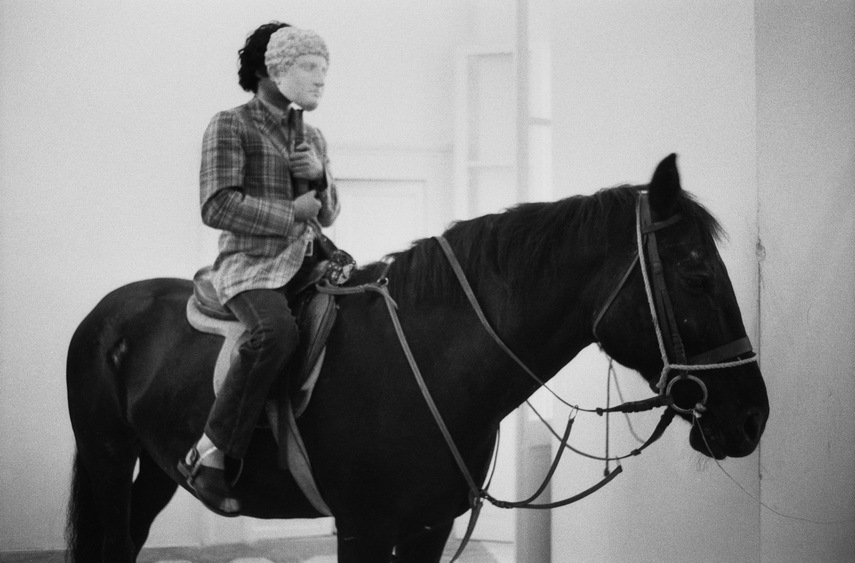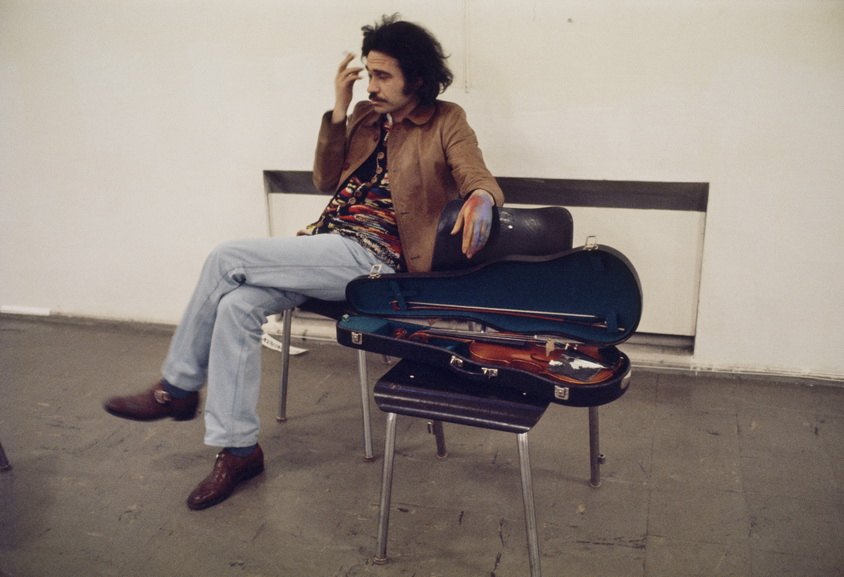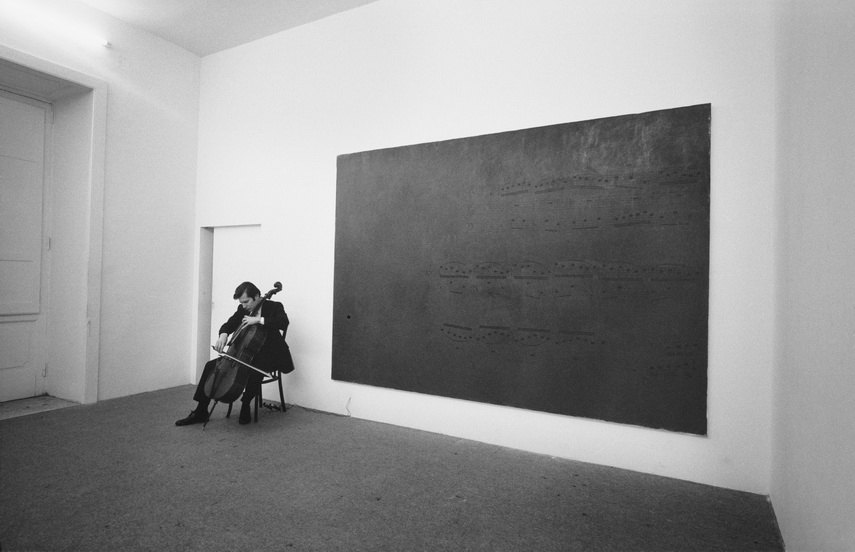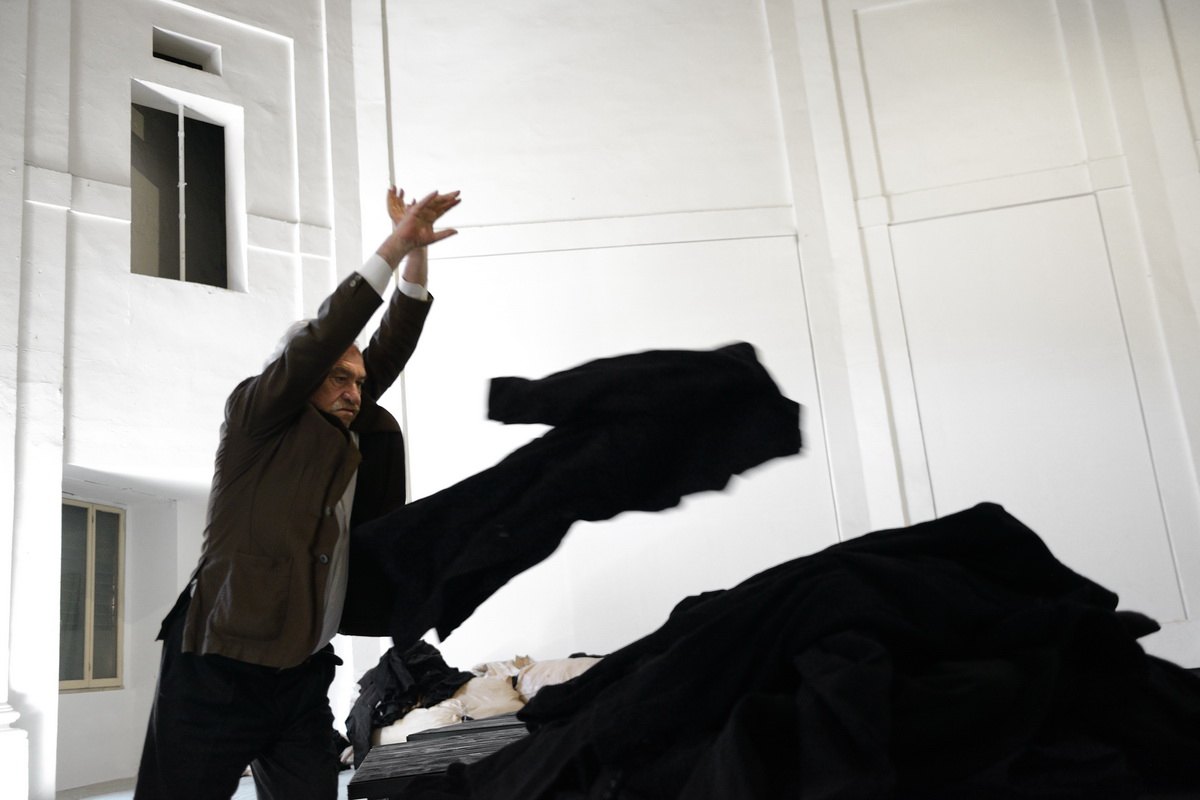[ad_1]
In the context of American visual arts, the 1960s were marked by the appearance of Pop Art and consolidation of the art market, while Europe saw the emergence of a new generation of artists willing to explore and experiment, similarly to the pre-war avant-garde artists of 1920s and 1930s. When it comes to the Italian art scene, the other determining factor was the past / the present – the burden of Fascism and the major social unrest during the sixth decade.
By having these two facts in mind, as well as the global climate (the rise of various social movements), it is much easier to understand the phenomenon called Arte Povera. It was the art movement which emerged between the end of the 1960s and the beginning of the 1970s in major Italian cities. One of the most prolific proponents of the same was Greek artist Jannis Kounellis, best known for his unprecedented 1969 installation Untitled (12 horses); his radical approach enabled the resurgence of the movement, not only in strictly artistic but also in social and even political sense.
The upcoming Kounellis retrospective at the Fondazione Prada in Venice will shed a much required light on his pioneering practice in the context of Art Povera, as well as in more general terms of art history of the second half of the 20th century.

A Major Figure of Postwar Italian Art
At the beginning of the 1960s, Jannis Kounellis only exhibited canvases carved or pierced with numbers, letters, and words, and were interpreted by the artist in his studio. Already in 1961, he started painting over the newspaper as a reaction to social and political shifts of the time, while in 1963 Kounellis introduced found objects that included live animals (and use to replace the canvas with bed frames, doorways, windows or simply the gallery itself).
Throughout the 1980s, he gained fame with his sculptures and performances and even performed with artists such as Edward Kienholz and Wolf Vostell. Despite the flow of time and moving trends, Kounellis remained highly regarded during the 1990s and 2000s until he passed away two years ago.

The Selection of Works
In order to show the full scope of his more than five decades-long practice, the leading Italian art historian and curator Germano Celant (the leading Arte Povera proponent) was elected to curate the exhibition in collaboration with Archivio Kounellis.
Kounellis’ early works, made between 1960 and 1966, will be presented in two spaces on the first floor; these paintings feature different writings and signs found on the streets of Rome or taken from nature and are reflecting the artist’s urge to deconstruct the meaning of words or concepts.
Around 1967, he moved to even more naturalistic elements such as soil or coal in order to radically abandon traditional painterly cannons. Namely, the idea was to replace the elitist and authoritative language of the art world for a more expressive one based on the primacy of vital elements and a terrestrial relationship with art.
The installations made by the artist in the late 1960s will be also on display; all of them will reflect how Kounellis perceived the organic elements and the heaviness, artificiality, and rigidity of industrial structures, and various other occupations.
The works focused on the exploration of fire daisy e.g. the phenomenon of combustion will reveal Kounellis’ interest in fire and the effects of the same; these experiments on canvas and other materials eventually led to his works from 1979 and 1980 which indicate the artist’s personal return to painting (a reaction to the anti-ideological and hedonistic approach of the same name which was popular in the 1980s).
The two works from 1980 and 2006, composed of musical instruments connected to gas cylinders, the motif of the door (present in the period from 1974 to 2004), as well as the installations from the late 1980s (shelves or metal constructions containing objects of various origins) and will also be displayed inside, while the monumental 1992 installation will be presented outside or, to be more specific, in courtyard of the Venetian palazzo.

Jannis Kounellis at Fondazione Prada Venice
The upcoming retrospective will definitely offer a thorough insight into the artist’s oeuvre, however, it will show the significance of the Italian art scene in a broader social and political context on the international scale.
An exquisitely illustrated publication including a curatorial essay by Germano Celant and interesting documentation made during the art-making process will additionally round the exhibited artworks.
Jannis Kounellis will be on display at Fondazione Prada in Venice from 11 May until 24 November 2019, so make sure you visit it alongside the 58th Venice Biennale.
Featured images: Jannis Kounellis – Centro Arti Visive Pescheria, Pesaro 2016. Photo Michele Alberto Sereni; Jannis Kounellis in the studio, 1969. Photo Claudio Abate; 37th International Art Exhibition Venice, 1976. Left to right: Mario Merz, Jannis Kounellis, Giuseppe Penone. Photo Claudio Abate. All images courtesy Fondazione Prada.
[ad_2]
Source link

